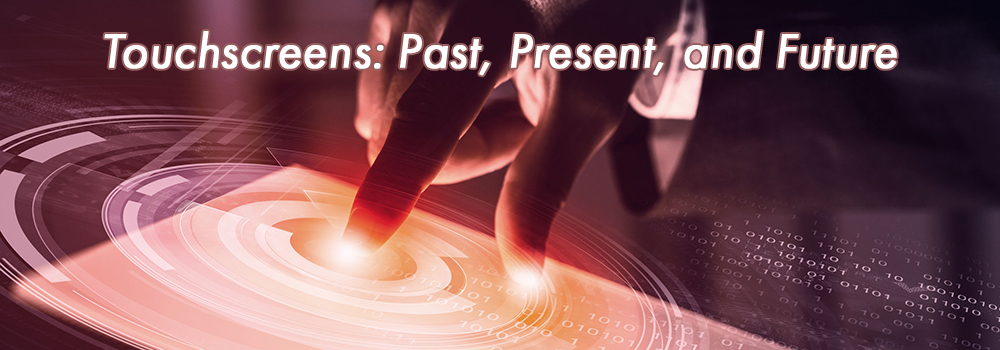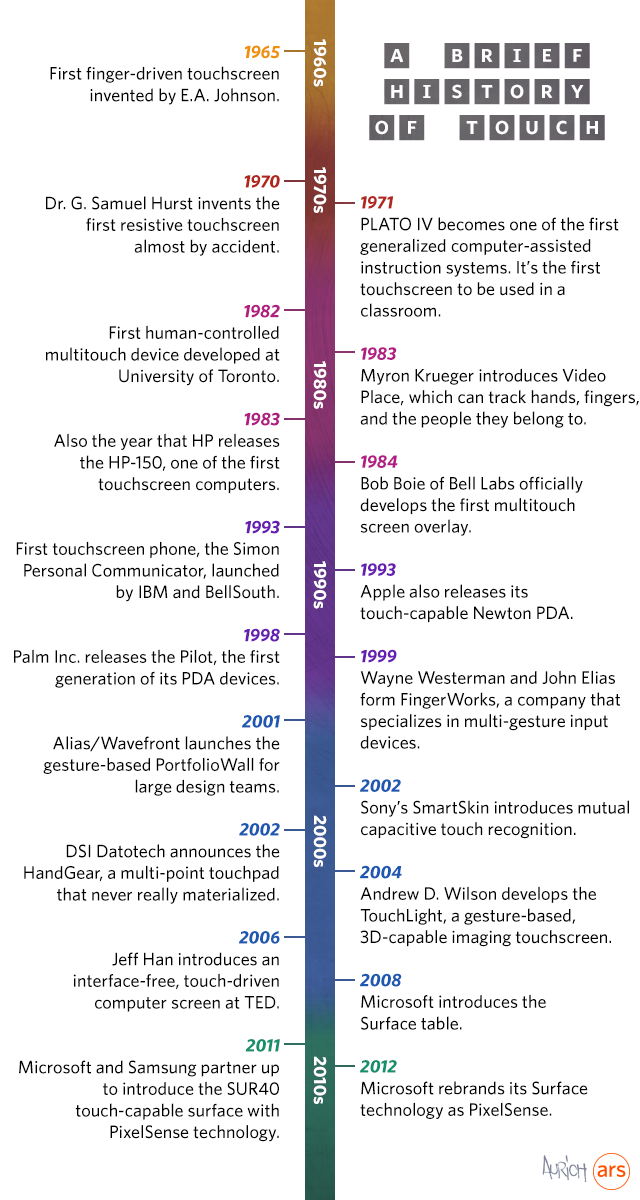
Touchscreens: The journey from Concept to Ubiquity
 Touchscreens: The journey from Concept to Ubiquity
Touchscreens: The journey from Concept to Ubiquity
Important for Prelims:
Touchscreens, Smartphones, Human-Machine Interface, I/O Devices, ATM machines, various home appliances (including TVs and refrigerators), e-readers, Billing systems, Smartwatches, Sensors, PDAs and Electronic Voting Machines.
Important for Mains:
GS-3 (Science & Tech.): Touchscreens, type of touchscreens & its functioning
Context:
In the 21st century, our access to the computing power of existing Smartphones is due to advances in electronics, signaling and fabrication technology – but its ultimate ubiquity is due to the Human-Machine Interface.
- The human-machine interface has provided the smartphone with a versatile and wide range of applications: the Touchscreen.
About Touchscreen:
- A touchscreen is a surface that combines two functions: receiving input for the computer (e.g., tapping on an app) and displaying output (launching an app).
Wide range of applications:
- In addition to smartphones, touchscreens today are also found on ATM machines, various home appliances (including TVs and refrigerators), e-readers, billing systems, and electronic voting machines.
Invention:
- According to many accounts, the touchscreen was invented in 1965 by an engineer named E. A. Johnson at the Royal Radar Establishment in Malvern, UK.
- In two papers published in 1965 and 1967, Johnson confirmed his invention – a capacitive device that could register being touched by a finger.
- In a 1967 paper, he wrote: "The idea of touch displays was conceived at R.R.E. in an effort to overcome limitations in human-machine communication.
- Its obvious application was originally in an Air Traffic Control Data-Processing System.
The next major invention on this front:
- Resistive touchscreen: In 1970, attributed to G. Samuel Hurst, then at the University of Kentucky.
- This Resistive touchscreen gave way to a stream of innovation in sector of touchscreen.
- In 1982, Nimish Mehta at the University of Toronto developed a touchscreen that could sense two touches at the same time (i.e. multitouch).
- In 1983, the American artist Myron Krueger reported a way to capture different hand gestures as actions on a screen.
- In 1984, Bob Boie at Bell Labs built the first transparent (capacitive) Multi touch Interface .
- Touchscreens also came to be adapted for computer terminals that non-experts could use to interact with the machine from the early 1970s, they started to become commonplace in everyday-use with a portable email-capable device that IBM and BellSouth launched in 1993, called Simon, followed by Apple's Newton, the Palm Pilot PDA, and other PDAs (short for Personal Digital Assistants).
- In the early 2000s, engineers lead the way with wall-sized touchscreens that multiple people could interact with, even remotely; devices that could render 'normal' computers capable of sensing touch and gestures; early touchpads that used multitouch to bring finger movements into the virtual realm; plus various improvements to the way touchscreens worked.
- In 2007, Vis-à-vis consumer electronics, there were two big breakthroughs : the release of the LG Prada and the Apple iPhone, which were the first phones with touchscreens.
Types and functioning of touchscreen
The two most common types of touchscreens are capacitive and resistive; there are are other techniques as well.
Capacitive touchscreens:
- Capacitive touchscreens are used in smartphones and other portable 'information appliances'.
- Such a a touchscreen consists of a surface with a grid of capacitors.
- A capacitor is an electronic device that consists of two plates parallel to each other, with an air gap in between, and each plate connected to the circuit. The plates store electric charge.
- When a finger touches the surface, an imperceptible amount of charge from a capacitor nearby flows through the wires into the finger, distorting the electric field at that point. Sensors located at the edges of the screen locate this distortion and relay it to a signal-processor to determine where the finger has touched. (This is why some touchscreens can't sense touch if the user is wearing gloves.)
- In smartphones, projected capacitive multi touch architecture is used.
Resistive touchscreen:
- Instead of capacitors, a resistive touchscreen uses resistance. That is, there are two sheets, both conductors, separated by a small gap. When a finger touches one sheet, it moves it at that point to touch the underlying sheet, allowing a current to pass there. Again, sensors pick up on this distortion from a grid of wires attached to one of the two sheets and, using a processor, determine the point of touch.
- Other touchscreen technologies are based on optical inputs and acoustic waves, among others.
- Between 2007 and 2013, capacitive touchscreens overtook resistive touchscreens in the consumer electronics market.
- Resistive touchscreens are cheaper to make and require less power to operate.
- But according to a review published in the journal Sensors in July 2021, capacitive touchscreens have better image clarity, sensitivity, and durability.
Next Step for touchscreens:
- Touchscreen technology has advanced rapidly, innovation continues to this day, given the advent of smartwatches and their small screens; machine-learning approaches that can extract more and more information from noisy inputs; and the integration of more and more sensors into smartphones themselves.
Conclusion:
Ultimately, what E.A. Johnson wanted was a way to ease "man-machine interactions", not a way to have haptic interactions with machines per se. In this sense, the machines around us virtually have a long way to go until, like in the Iron Man films, they're extensions of ourselves.
Source: The Hindu
----------------------------------------
Mains Question
What is touchscreens? Discuss the types and functioning of touchscreen and highlight its next innovations.